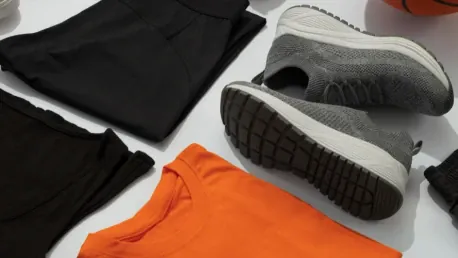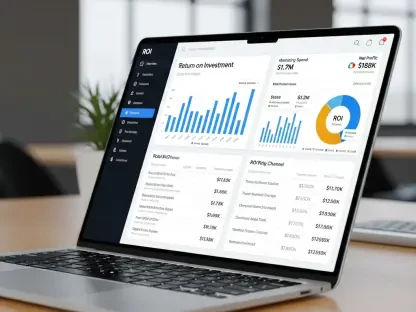Kevin Plank, the charismatic founder and once-CEO of Under Armour, has returned to the helm of the company at a critical juncture. The organization is grappling with declining revenue, shifting consumer preferences, and fierce competition in the athletic apparel market. Despite a slight positive blip by narrowly beating revenue expectations, Under Armour’s Q3 results paint a picture of significant challenges ahead. With overall revenue falling by 5.7% to $1.4 billion, the company faces tough choices in its largest market, North America, and crucial strategic decisions in its direct-to-consumer (DTC) channels.
Navigating Financial Challenges
Revenue Declines and E-Commerce Troubles
Despite the slight revenue expectation beat, the stark reality is that Under Armour experienced a considerable 5.7% decrease in Q3 revenues, amounting to $1.4 billion. This decline was particularly pronounced in North America, the company’s primary market, reflecting broader challenges in keeping pace with consumer demands and competitive pressures. A significant contributor to the revenue drop was a dramatic 9% decline in sales through the DTC channel, primarily driven by a 20% plunge in e-commerce sales. The reduction in promotional discounts, a deliberate strategic decision to preserve brand integrity and reduce dependency on markdowns, has deeply impacted online sales.
Wholesale revenues, however, showed relative stability, decreasing only slightly by 1% to $705 million. This stability in wholesale contrasts starkly with the sharp declines in the DTC channels and highlights a critical focus area for the company. Kevin Plank sees expanding and enhancing wholesale accounts, particularly with boutique retailers, as a means to bolster shelf space, strengthen brand equity, and attract a more diversified customer base. This strategic pivot towards wholesale underscores the brand’s effort to re-establish its premium positioning in the athletic market, albeit against a backdrop of declining overall sales.
Strategic Personnel and Product Delays
Under Armour’s financial strategy goes beyond mere sales figures, encompassing significant internal restructuring and strategic personnel hires. The company’s move towards a high-end product focus is epitomized by the recent addition of a new chief product officer and the renowned chief design officer John Varvatos. These hires signal a conscientious shift towards innovation and premium product offerings aimed at setting Under Armour apart in a competitive market. However, the ambitious product pipeline not only requires time to develop but also faces the challenge of delayed product lead times, tempering immediate expectations of a swift market impact.
Neil Saunders, managing director of GlobalData, offers a nuanced perspective, indicating that Under Armour’s current sales figures reflect both calculated brand re-engineering efforts and the inherent challenges of consumer resonance in a crowded market. The company’s aggressive downsizing, SKU reduction, and investment in strategic personnel are crafted to support a long-term turnaround, with tangible results on product offerings and market positioning expected to manifest gradually. This strategic patience reflects a deeper commitment to sustainable brand growth rather than short-term revenue boosts.
Enhancing Distribution Networks
Wholesale Distribution and Quality Partnerships
Efforts to improve Under Armour’s distribution network are a cornerstone of its turnaround strategy. Key partnerships, such as those with Kohl’s, play a pivotal role in enhancing brand exposure, particularly among female consumers. The diversified approach to distribution, with no single partner dominating sales, reflects a deliberate strategy to broaden market reach and stabilize revenue streams. By focusing on creating quality wholesale partnerships that drive the sale of premium products, Under Armour aims to embed its brand more deeply into the retail ecosystem, securing both shelf space and consumer mindshare.
This focus on high-quality wholesale partnerships underscores a strategic shift from a widespread, volume-driven approach to a more targeted, value-driven strategy. This transition is marked by careful selection of retail partners who align with Under Armour’s premium quality and brand ethos. Such partnerships are not merely transactional but are cultivated to build long-term collaboration aimed at mutual growth and enhanced consumer offerings. This approach also allows Under Armour to mitigate risks associated with market dependency on single large partners, thus providing greater stability in revenue flows.
Marketing and Loyalty Programs
A significant investment in marketing, particularly through a revamped loyalty program with an impressive 17 million members, forms a vital part of the company’s broader strategy. This loyalty program goes beyond simple discounts, aiming to build a sense of community and brand loyalty among consumers. This focus on community engagement highlights an effort to forge deeper connections with customers, promoting long-term brand affinity. The program’s structure, designed to reward loyal consumers with more than just financial incentives, showcases Under Armour’s commitment to value-driven customer relationships.
Additionally, Under Armour’s minimal reliance on Chinese manufacturing offers an advantage in navigating the complexities of tariffs and trade disruptions. This strategic positioning allows the company to maintain a degree of agility and resilience in the face of global trade challenges, ensuring a steadier supply chain flow and cost management. With the balance of marketing investments and strategic manufacturing choices, Under Armour aims to carve out a strong, differentiated position in a highly competitive market.
Strategic Outlook for Under Armour
Path to Long-Term Growth
Under Armour’s current approach, under Kevin Plank’s renewed leadership, represents a carefully balanced strategy of financial restructuring, product innovation, and distribution broadening. The mixed near-term financial results underscore the complexities of this turnaround effort, reflecting both strategic moves and market challenges. By focusing on high-end products and quality wholesale partnerships, Under Armour is positioning itself for sustainable long-term growth, albeit through a path that involves significant operational adjustments and market repositioning.
Operational adjustments, such as aggressive downsizing and SKU reduction, aim to streamline the company’s focus toward more profitable and resonant product lines. These measures, while initially painful, are expected to realign Under Armour’s market offerings with evolving consumer demands and competitive dynamics. The strategic patience exhibited through these moves reflects a long-term vision of brand revival, aimed at establishing Under Armour not just as a participant, but as a leader in the premium athletic wear space.
Navigating Competitive Pressures
Kevin Plank, the dynamic founder and former CEO of Under Armour, has reclaimed his leadership position at a crucial moment for the company. Under Armour is currently battling declining revenue, evolving consumer tastes, and intense competition in the athletic wear industry. Despite a mild uptick by just surpassing revenue projections, the company’s third-quarter results highlight looming difficulties. Total revenue fell by 5.7%, bringing it down to $1.4 billion, signaling the need for strategic choices, especially in its largest market, North America. As Under Armour navigates these tough waters, key decisions regarding its direct-to-consumer (DTC) channels will be essential for the company’s future. Plank’s return could be instrumental in steering Under Armour through this challenging period, as his experience and vision will be crucial in reinventing the brand and improving its market position. His leadership might just be what the company needs to adapt to the changing trends and regain its competitive edge.









